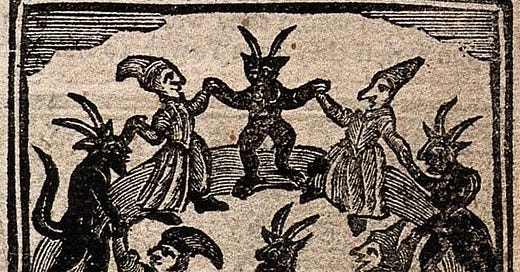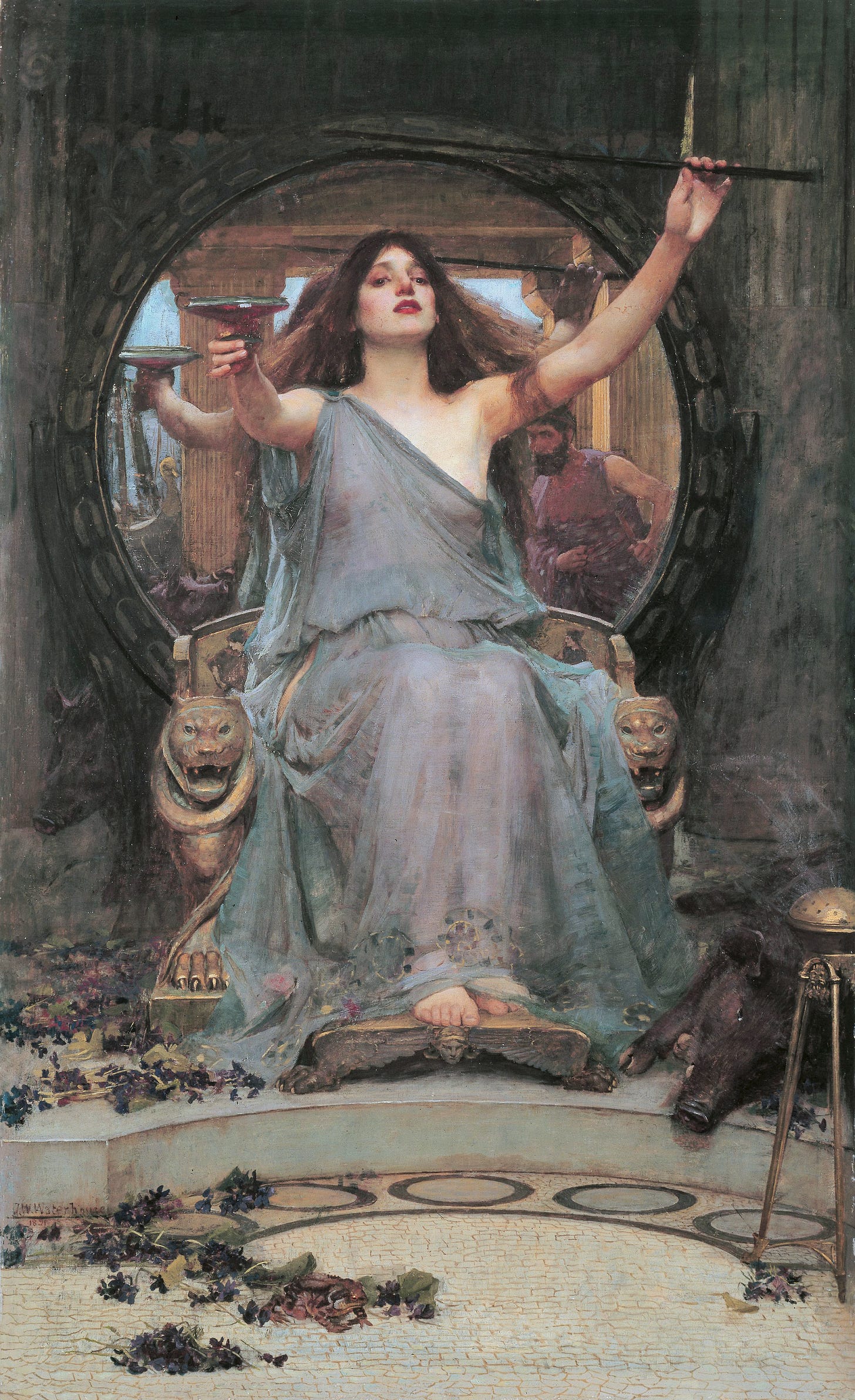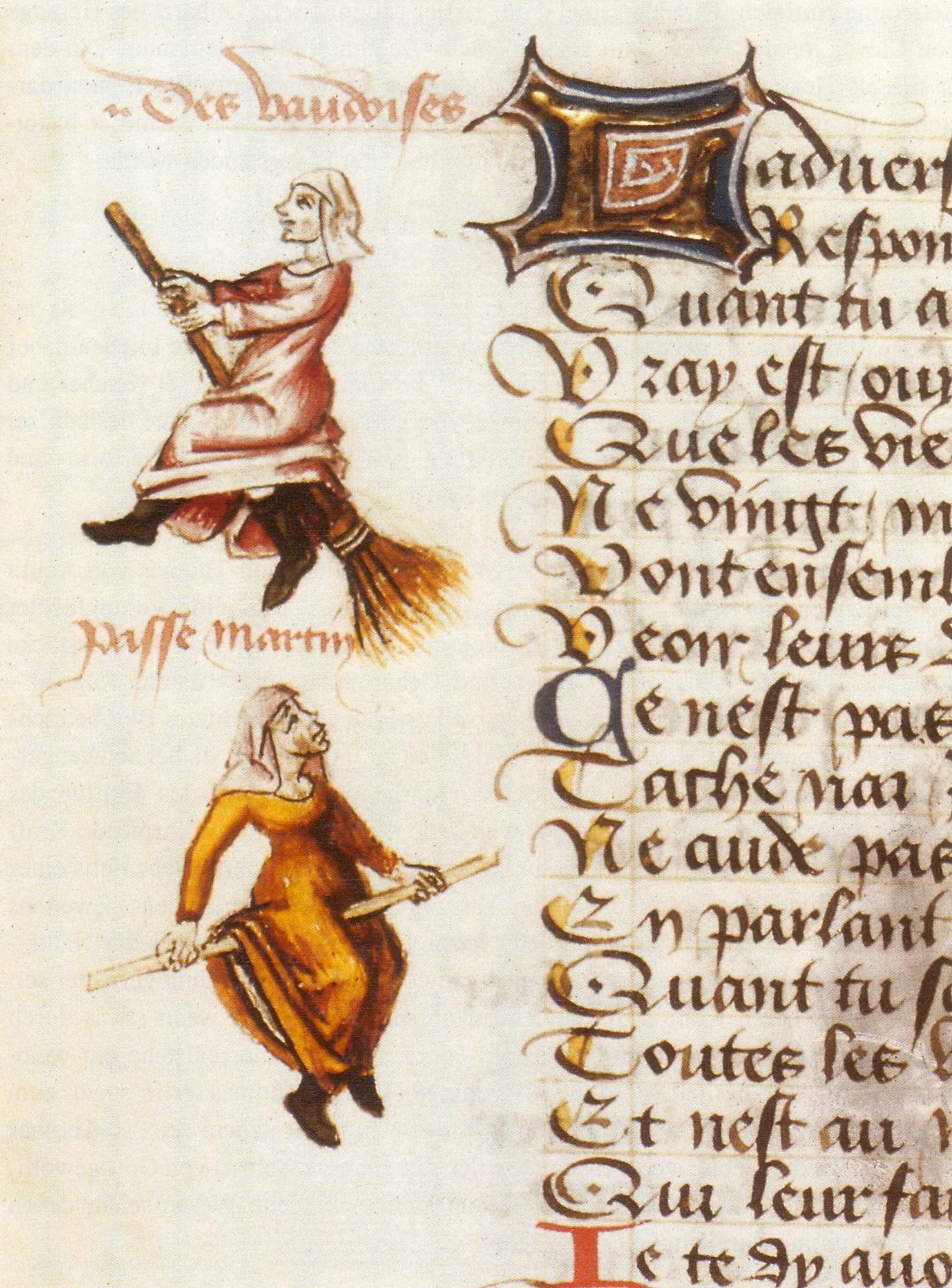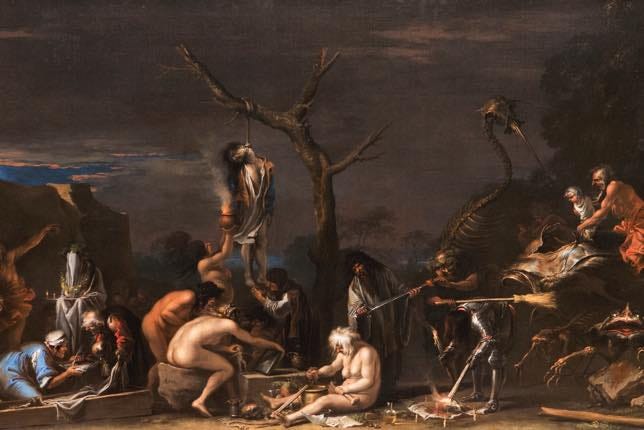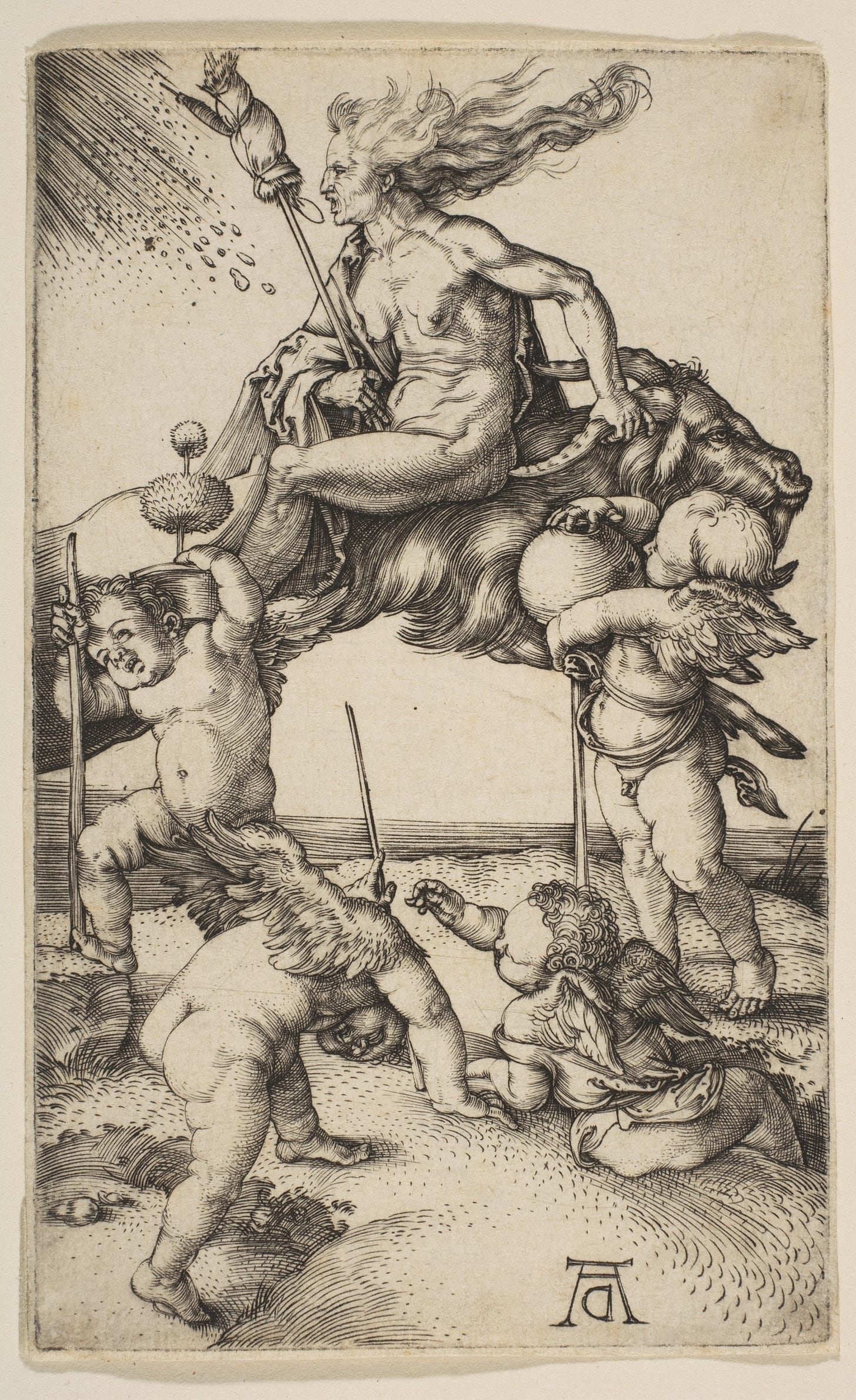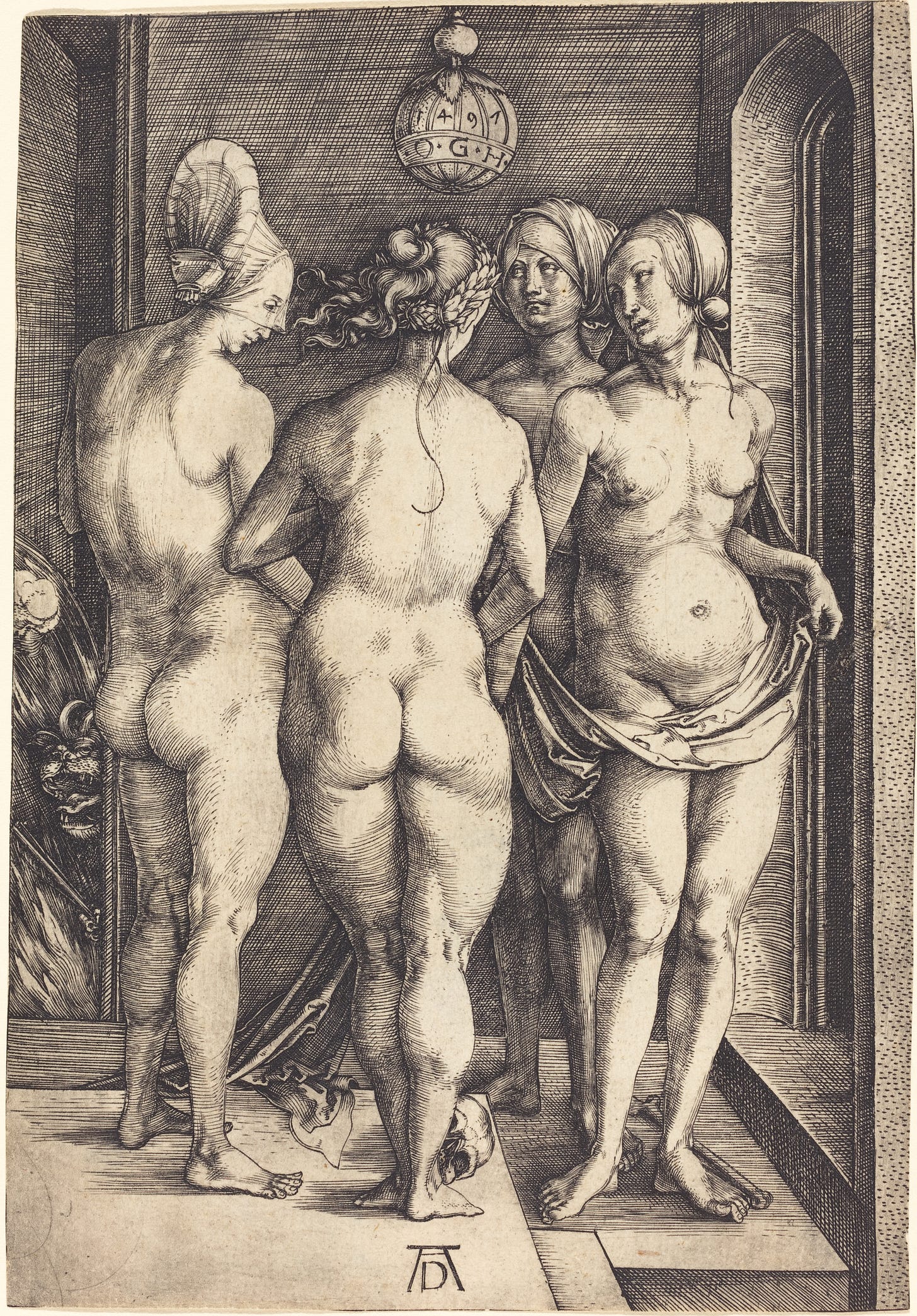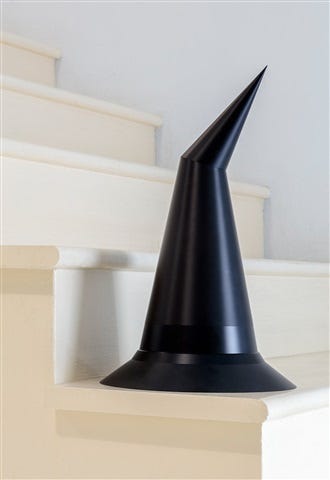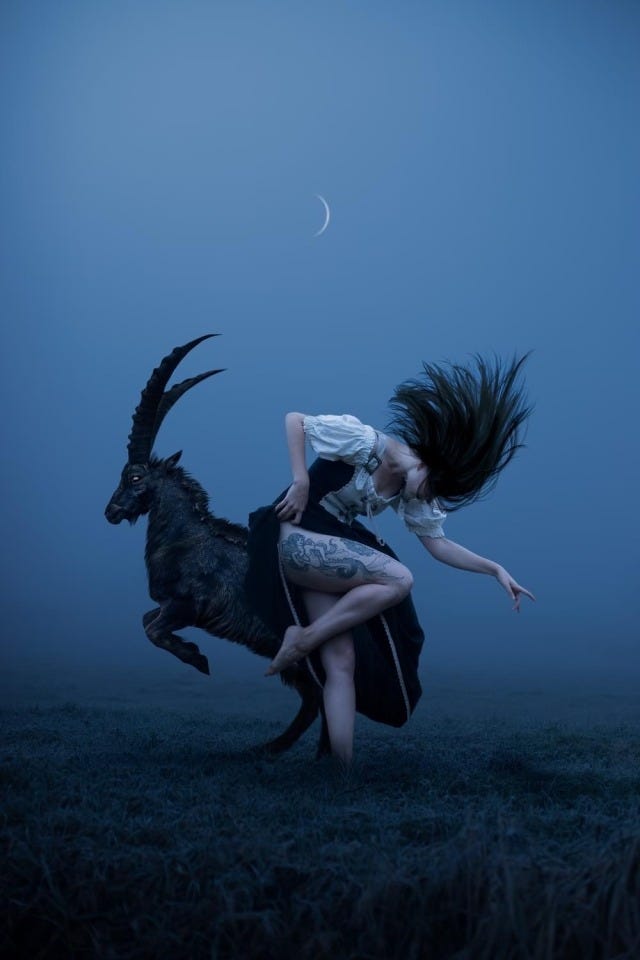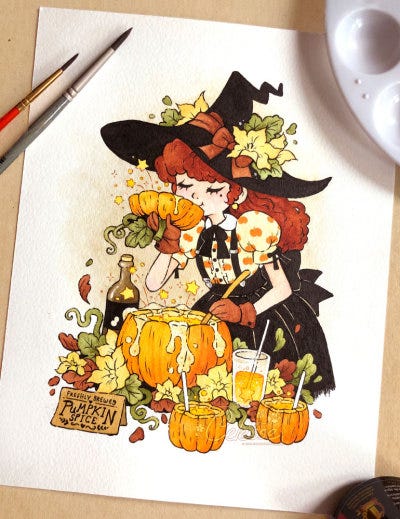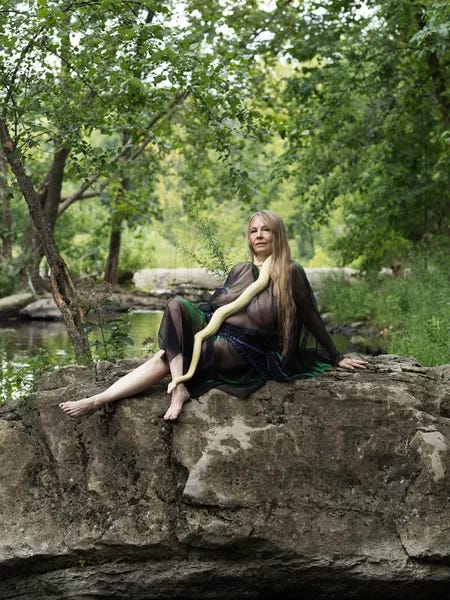Witch Week: Witches In Western Art History
Looking at witches throughout art history illustrates shifting attitudes around witchcraft - and some things that stay the same.
image credit: Witches And Devils Dancing In A Circle, 1720
'There's probably not a society in the whole world which, at some stage in its history, has not believed in the power of witches as beings with special magical powers that can be used for malignant, destructive, predictive ... or even occasionally for healing purposes,' artist, art historian and curator Deanna Petherbridge told the podcast Art Matters back in 2019. It seems that people have been telling stories of witches - people with uncanny, supernatural powers, usually women - for almost as long as they've been telling stories.
And yet, despite their longevity, much of the symbolism and imagery surrounding witches and witchcraft has remained remarkably consistent throughout history. Other depictions illustrate how other cultures felt about witches, especially the Classical world, such as the sorceress Circe from Greek mythology, who transformed Odysseus' men into swine in the Odyssey - a popular subject for paintings through history.
Image Credit: John William Waterhouse, Circe Offering the Cup to Odysseus
Waterhouse’s painting illustrates that witches are not always old or unattractive women. This discrepancy illustrates that witches have been shown in art throughout history suggest not only a problem with particularly aspects of femininity but with women in general. Witches in art history give form to anxieties around feminine power, as a whole, as well as women’s role as scapegoat and Other under patriarchy.
Witches In Medieval Artwork
image credit: illustration from Champion des dames Vaudoises by Martin Le Franc (1451).
The earliest known depiction of a witch riding a broomstick comes from an illustration for a poem “Champion des dames Vaudoises” by Martin Le Franc from 1451. Tellingly, witches were already being associated with some of the iconography they’re still known for today around the same time the Gutenberg Bible was being printed. In this illustration, these women on broomsticks are referred to as “Waldensians,” who were a heretical sect of the time. Witches are heretics were twin devils, undermining the status quo of unquestioning obedience to the Christian church, especially Protestantism.
Witches were seen as solitary threats where heretics were more often depicted in groups. This suggests that heretics were perceived as more of a threat to the order of the day. Later, witches would inherit some of that malevolent power when artists started depicting the wild revels of witches’ covens.
image credit: Witches at their Incantations, by Salvator Rosa
This period would also see some of the most famous and iconic depictions of witches and witchcraft through the works of famed German engraver Albrecht Dürer. Two of Dürer’s best-known witch artworks illustrate the twin polarities of the fear of witches. The Witch depicts the more familiar form we most commonly associate with the figure of the witch - the witch as hag.
image credit: Albrecht Dürer, The Witch
Another from around the same period illustrates a much different anxiety, however. The Four Witches from 1497 depict the witches as four young comely women in the nude. It’s alternate title - The Four Naked Women - hints at some of the real fears that witches evoke - the fear of feminine sexual power and of women gathering in general.
image credit: Albrecht Dürer, The Four Witches
Witches being depicted as either maiden or crones reveal two faces of the Patriarchy’s problem with women - 1. the fear of the sway that women’s sexuality has over men and 2. the fear of women who can no longer give birth. The image of the crone as a fearful figure speaks volumes, saying in no uncertain terms that a woman’s only worth is through giving birth.
Witches As Allegory
image credit: Francisco Goya, Witches’ Flight
By the mid-1700s, Europe had entered a more enlightened age. The witch trials had ceased by that point for the most part. Every European country, barring Switzerland, had decriminalized witchcraft by 1750. As a result, in the 18th Century the figure of witches in Western artwork served as an allegory for all manner of social ills.
The paintings of Spanish painter Francisco de Goya, some of the best-known and iconic witch paintings of the era, are sometimes thought to be a visual shorthand for the widespread superstition and paranoia of the times, as the Spanish inquisition was still blazing like a wildfire.
Some paintings to follow, such as another from John Williams Waterhouse, The Magic Circle, portray the witch as a young, beautiful woman. Instead of a figure of fear and terror, this witch seems to be a figure of romance and fantasy. The message seems to be, witches aren’t real. There’s nothing to be afraid of.
The Witch In Modern Art
image credit: Robert Therrien, No title (witch hat), 2018
Unsurprisingly, now that there’s less risk of being burned, hung, or pressed to death by stones, there’s been an explosion of modern artists exploring witchcraft.
image credit: @Victoria__Veil
Some, like this image from photographer Victoria Veil, use the image of the witch as a symbol of liberated and empowered femininity or to explore their own practice.
Others draw witches that are cute AF:
image credit: Celesse
or
Still others use witchcraft as an excuse to take pictures of their Rose Quartz rods for the ‘gram.
Some choose to depict modern practitioners, as in the case of Frances F. Denny’s photo series “Major Arcana: Witches in America”
550 years later, witches remain as evocative and powerful of an image as they were in the 1450s. Considering the conversations around sex and body positivity, giving voice to marginalized communities, and many forms of non-Western thinking and philosophy, it’s even more important that we continue to lift up witches and witchcraft via artwork and creativity.
Want More Witchcraft?
Follow @for3stpunk on Twitter and Instagram, TikTok, Letterboxd, Goodreads, and drop by the Facebook page!
Liking Hauntology Now? Buy Us A Coffee!
and make sure to
